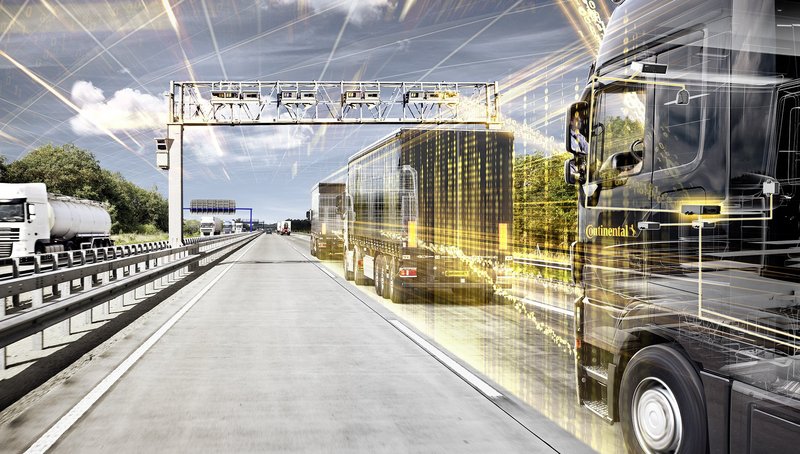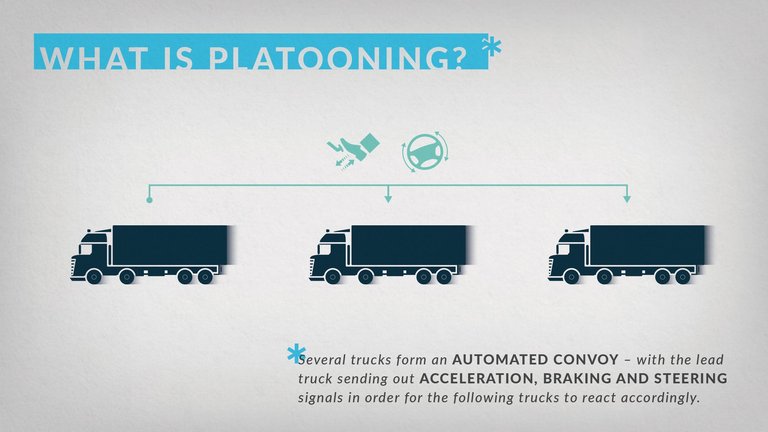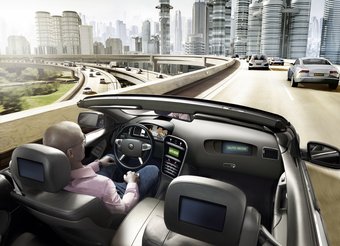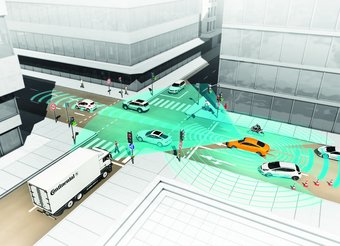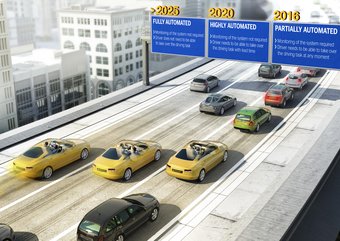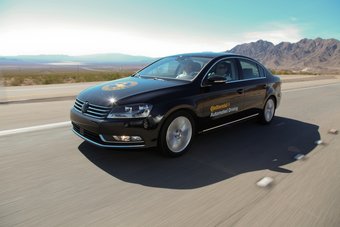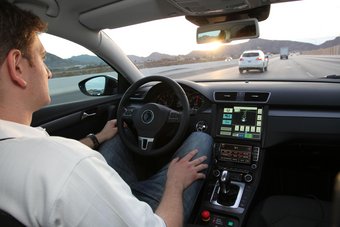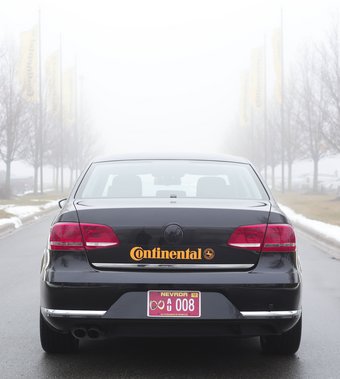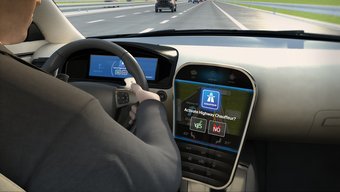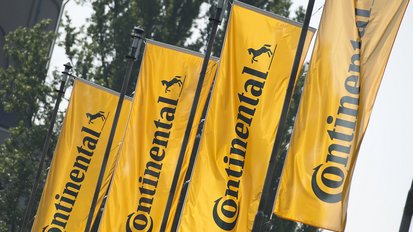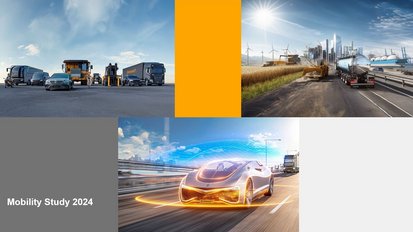Up to 15 Percent Less Consumption – Continental Focuses on Automated Truck Convoys
- "Truck platooning" – or the electronic towbar – significantly reduces fuel consumption
- Paving the way for truck platooning, Continental is developing reliable, digital slipstreaming for automated trucks to be put into production by 2020
- The technology company considers the legal framework to be the final hurdle
- The Continental Mobility Study 2016 indicates a huge demand for information about digitalization within the transport industry
Hanover, September 2, 2016. "Every percent counts toward lower consumption," says Dr. Elmar Degenhart, CEO of the international technology company Continental, referring to the importance of low-emission transport. Accordingly, the company is developing components and systems for the series launch of the electronic towbar, also known as "platooning." "With platooning, the truck, which is electronically coupled with the lead vehicle, consumes up to 15 percent less fuel thanks to safe slipstreaming. Even the lead vehicle drives up to three percent more efficiently on account of the reduction in air turbulence," says Dr. Michael Ruf, head of the Commercial Vehicles and Aftermarket business unit, explaining the main advantage of the series launch of the electronic towbar.
The technology used is complex in detail but the basic principle is actually very simple. Continental is focusing on an interoperable internet platform, which trucks from different manufacturers and fleet operators can use to form an electronic convoy on the freeway. Braking and sensor data are transmitted wirelessly from the lead vehicle to the following vehicles. Thanks to the electronic towbar, Continental envisages the possibility to initially reduce the distance between vehicles from 50 meters to only 15 meters at a speed of 80 km/h. Development experts even predict that, in the long term, it will be technically possible to safely reduce this distance to only 10 meters. This will even further reduce the space required for the trucks. The drivers in the convoy are supported by automated driving systems. As the first step, Continental is working on the technology for highly automated convoys comprising a lead truck being followed by one or two additional trucks using the electronic towbar.
If only 50 percent of the annual mileage of a truck – totaling 150,000 km – was driven in convoy, every coupled truck would be able to save 4,000 liters of diesel per year. One of these convoys would reduce annual fuel costs by over €9,000 per year and enable the fleet operator to reduce its CO2emissions by 24 kg per hour with a convoy of three trucks.
Already in April 2016, six truck manufacturers demonstrated the technical functionality of platooning in the European Truck Platooning Challenge and governments around the world are working on the statutory regulations surrounding automated driving. Ruf points out the need for this legislation: "It is important to create a legal framework that permits the minimum spacing within a platoon to be reduced if the technological capabilities of the trucks allow for it. An opportunity like this, which can bring about huge fuel and, consequently, CO2 savings must not go to waste. We are currently doing our homework with regard to the development of systems for production and striving for swift clarification of the framework conditions. The legal framework is the final hurdle before the introduction of platooning." Continental will be presenting basic platooning technology at this year's IAA Commercial Vehicles at Stand A06 in Hall 17.
Key element in the implementation of platooning: the acceptance of new technology
Continental is working on six elements of automated driving both for passenger cars and trucks for production: sensor technology, swarm connectivity, human-machine dialog, system architecture, reliability, and the acceptance of new technology. With regard to the acceptance of innovative technologies by the key players in the transport industry in particular, Continental sees plenty of potential among German and Chinese fleet operators after viewing the initial results of the Continental Mobility Study 2016. Whereas only 15 percent of logisticians surveyed in the latest joint study with infas consider the transport industry to be well positioned for the future, only 28 percent see automated driving as an opportunity for the industry. Member of the Continental Executive Board Nikolai Setzer is all too aware of the challenge facing the industry, explaining that: "The initial results of the study show that the automotive and commercial vehicle industry has got a lot more persuading to do before the obvious advantages of digitalization for safety and environmental protection become a reality on our roads."
An overview of the various aspects of automation in the automotive and commercial vehicle industries can be found on the information and discussion platform 2025AD.com, which reports on the technology behind platooning and simplifies the concept using infographics. Furthermore, the advantages and disadvantages of automation in the commercial vehicle industry are also discussed on this platform.
